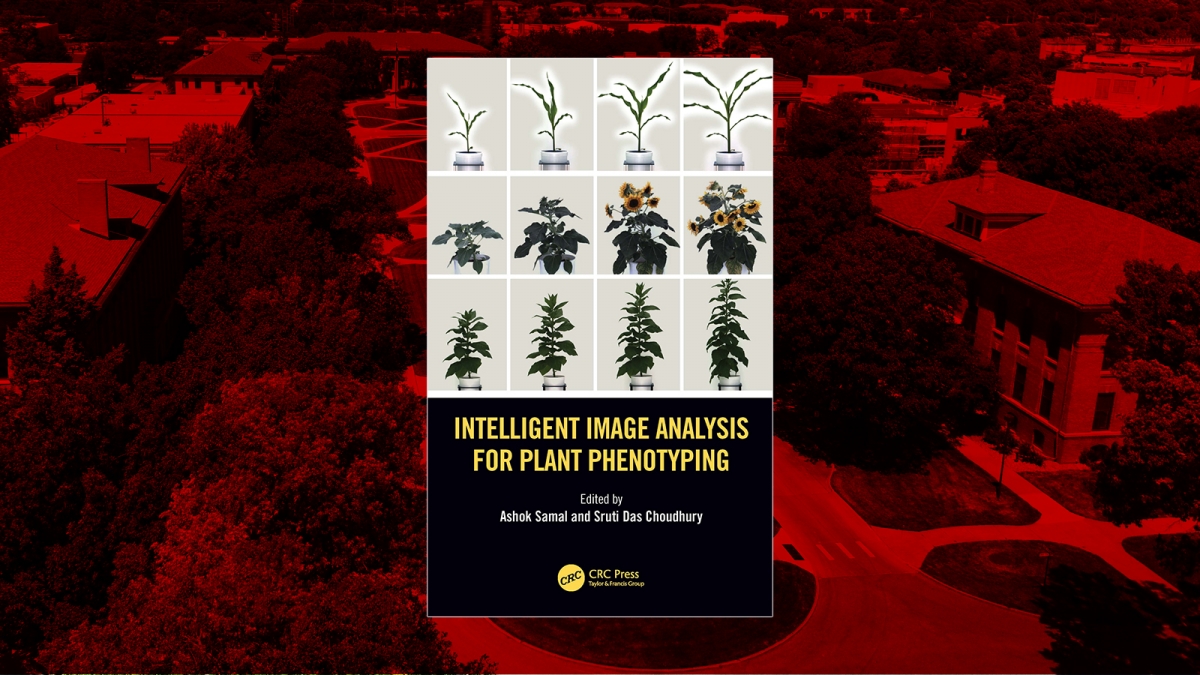
Lincoln, Neb.—Image-based plant phenotyping analysis is an emerging research field that aims to link intricate plant phenotypes to genetic expression for global food security under dwindling natural resources and climate variability. It is an interdisciplinary research field that lies at the intersection of computer vision, plant science, genomics, statistics and artificial intelligence.
A book titled “Intelligent Image Analysis for Plant Phenotyping,” the first of its kind in this research sector, has been recently published by Ashok Samal, a professor in the Department of Computer Science and Engineering, and Sruti Das Choudhury, research assistant professor in the School of Natural Resources.
The book reviews information on time-saving techniques for identifying plant traits through image-based plant phenotyping, a process that until recently was strenuous and time-consuming. New methodologies using computer vision and imaging technology provide automated, non-invasive and scalable mechanisms to define and collect plant phenotypes.
The book features:
Methodologies for image processing, including data-driven and machine-learning techniques for plant phenotyping;
Information on advanced techniques for extracting phenotypes through images and image sequences captured in a variety of modalities;
Real-world scientific problems, including predicting yield by modeling interactions between plant data and environmental information;
Discussion of the challenge of translating images into biologically informative quantitative phenotypes.
Samal received his undergraduate degree from the Indian Institute of Technology, Kanpur, India, and his doctorate from the University of Utah. His research interests include computer vision and data mining, and he has published extensively in these areas. More recently, he has focused on plant phenotyping and co-leads the Plant Vision Initiative research group at the University of Nebraska-Lincoln.
Das Choudhury was previously a postdoctoral research associate in the Department of Computer Science and Engineering of the University of Nebraska-Lincoln and an Early Career Research Fellow in the Institute of Advanced Study of the University of Warwick in the United Kingdom. She received her undergraduate degree from the West Bengal University of Technology, her master’s from the University of Calcutta, India, and her doctorate in computer science engineering from the University of Warwick. Her research focus is on biometrics, data science, and, most recently, image-based plant phenotyping analysis. She co-leads UNL’s Plant Vision Initiative research group.
Additional publications led by Das Choudhury on image-based plant phenotyping analysis can be found at https://plantvision.unl.edu/publications.
Read the original article here.